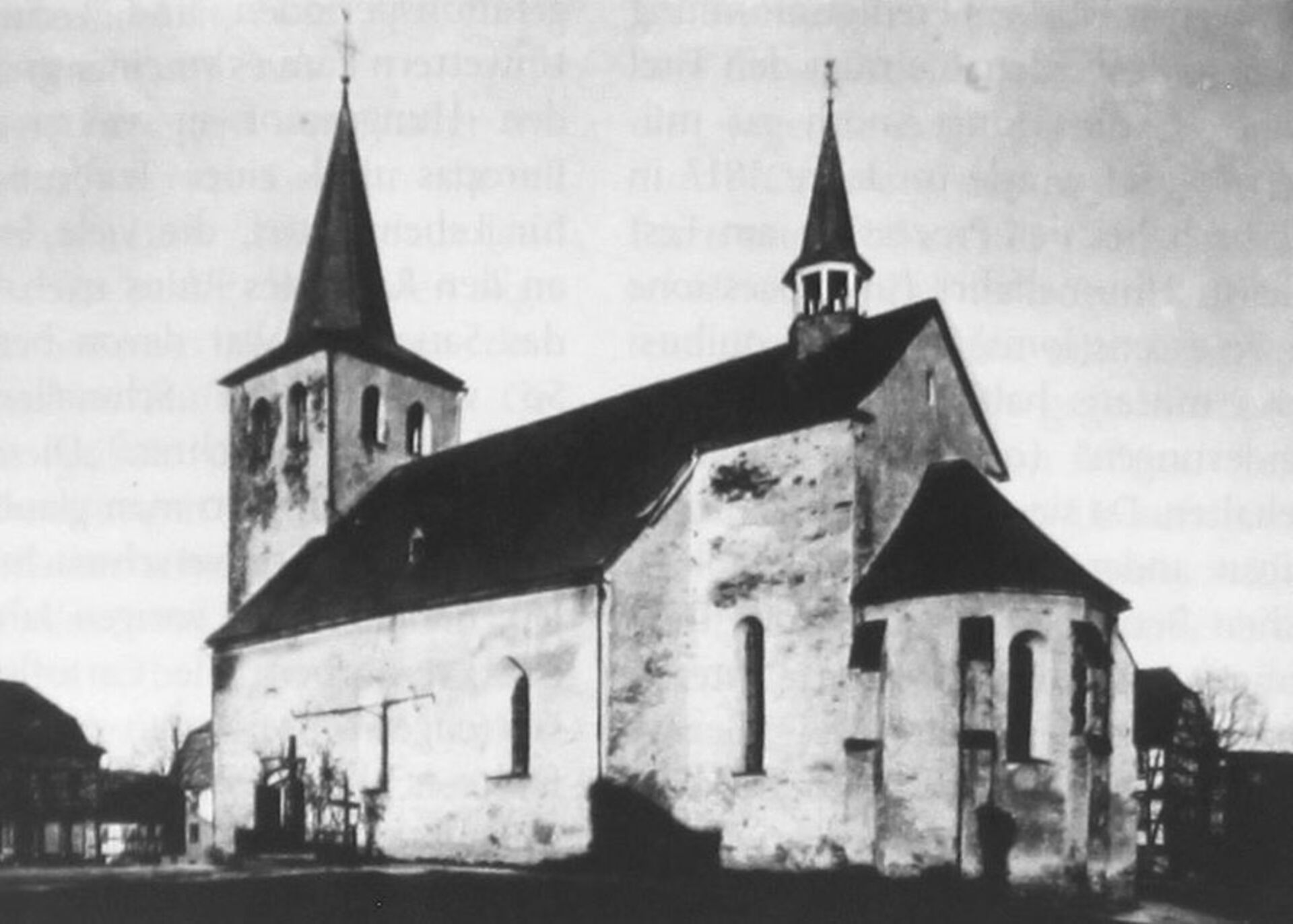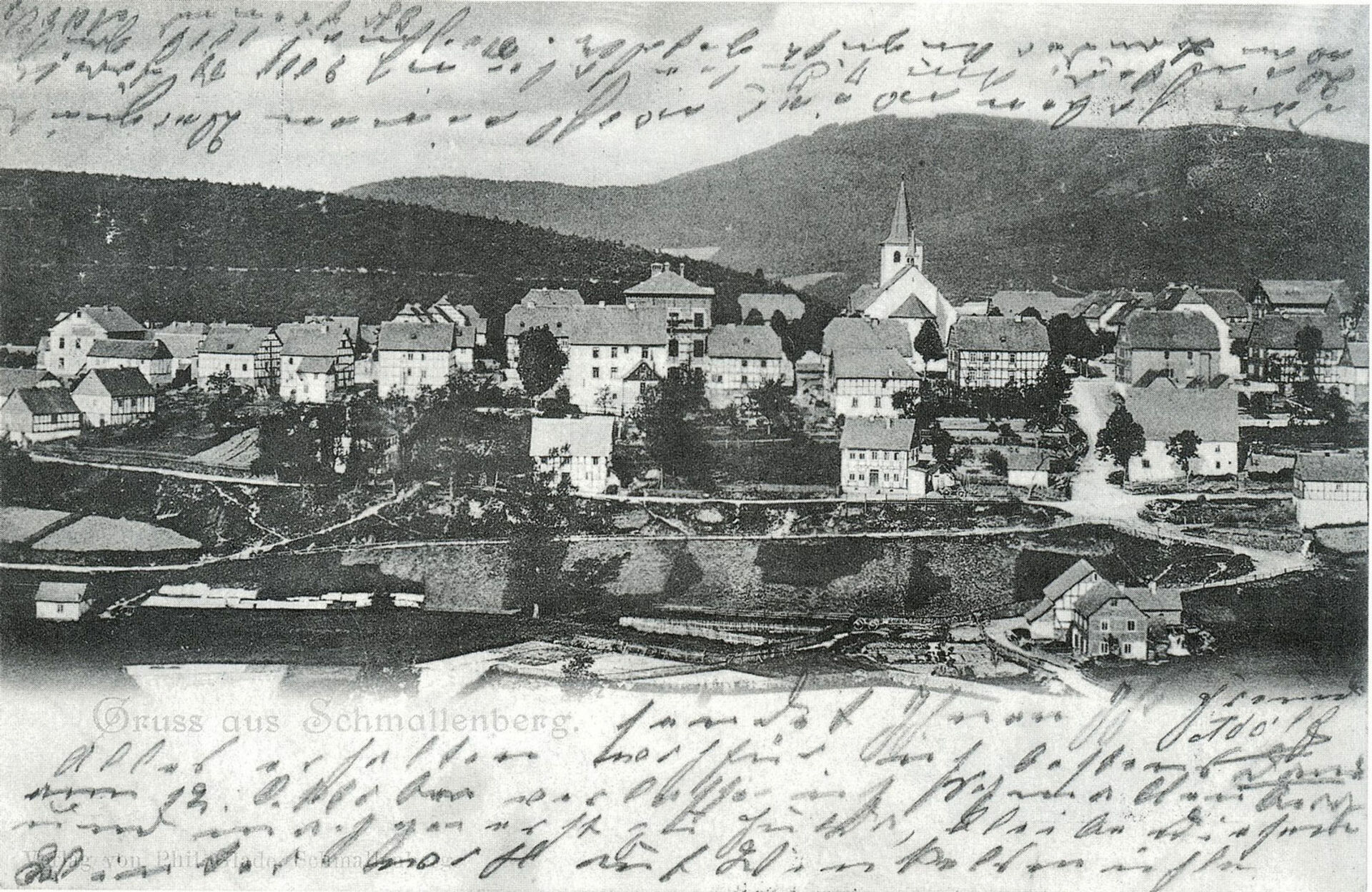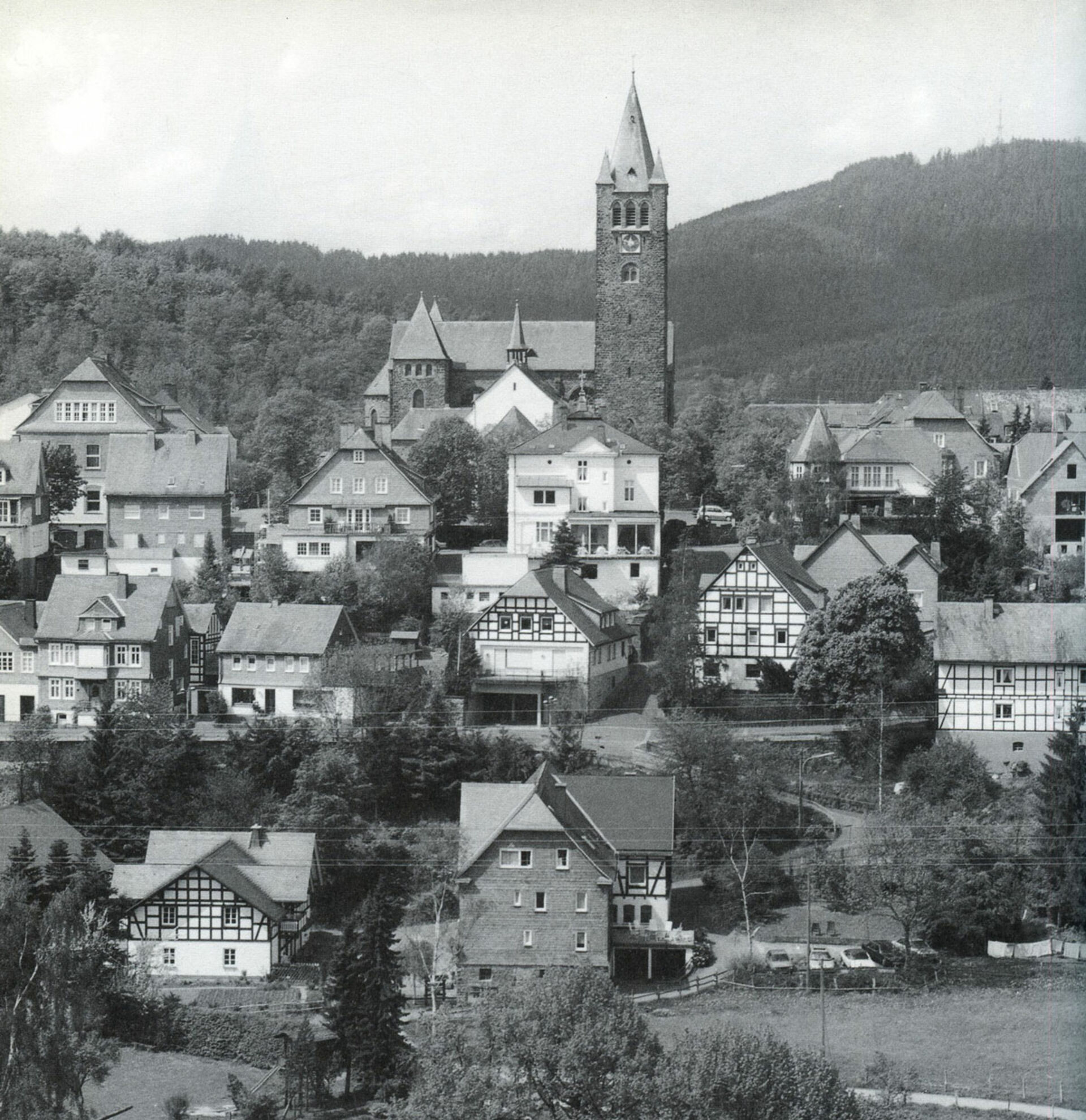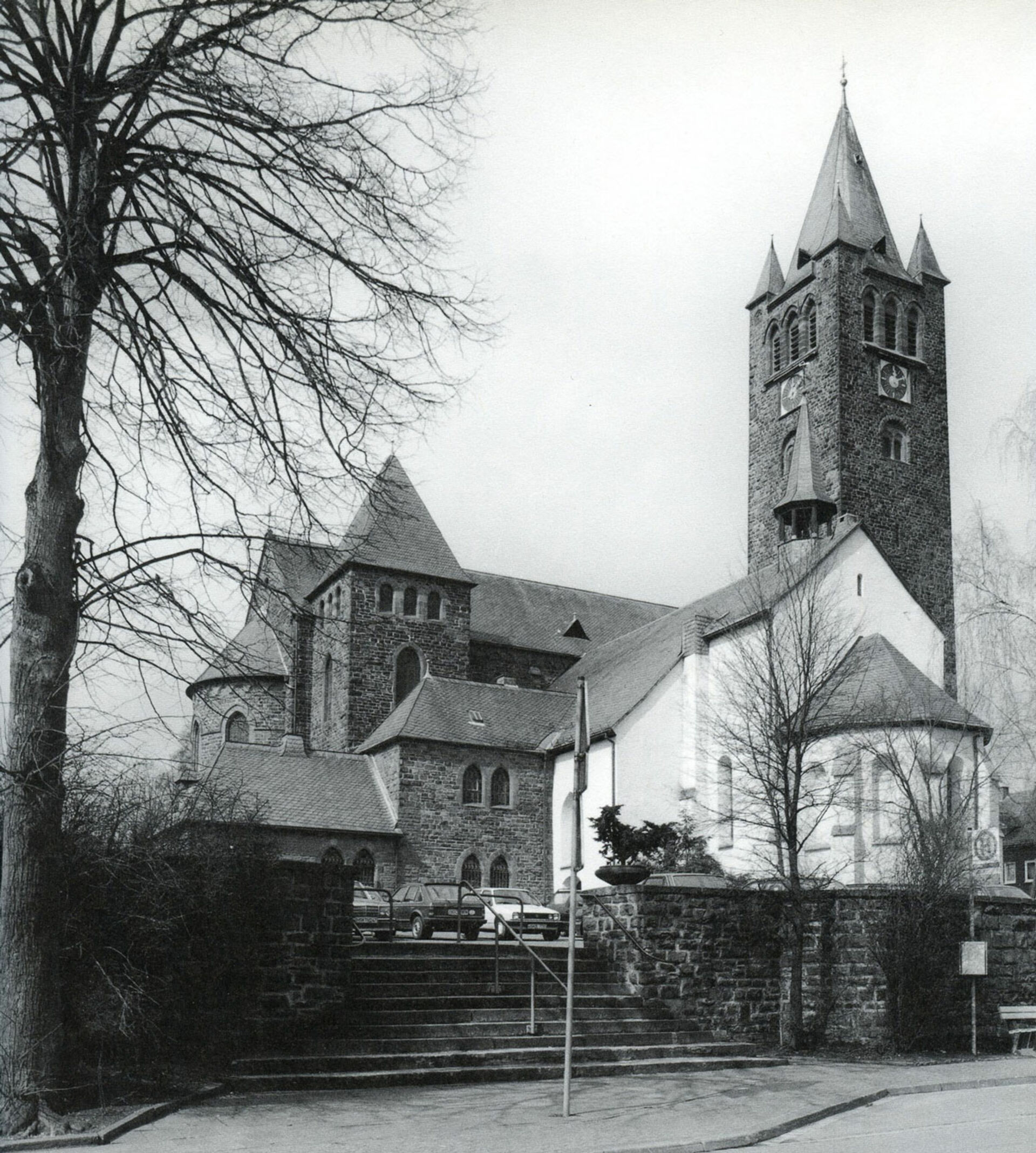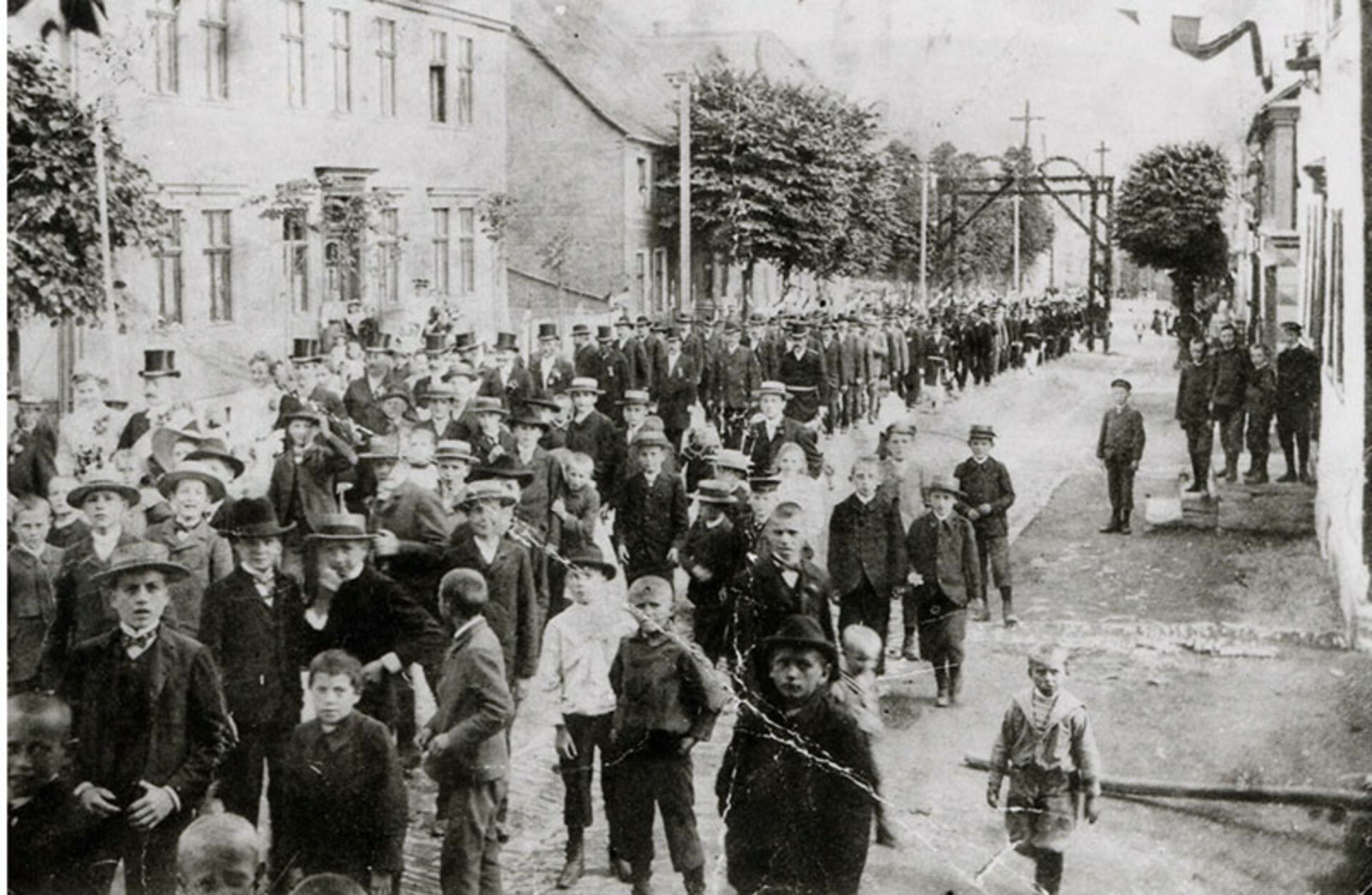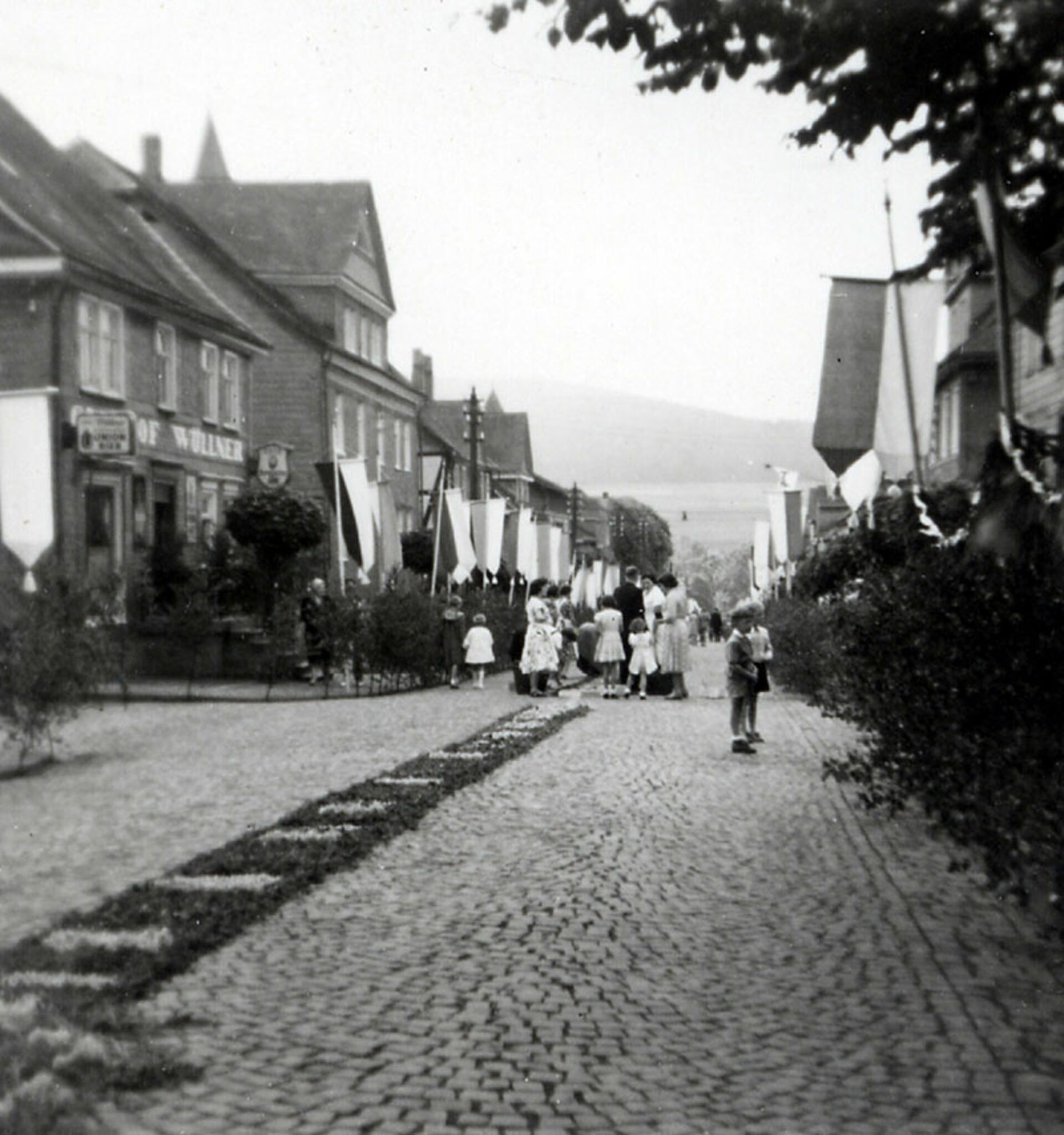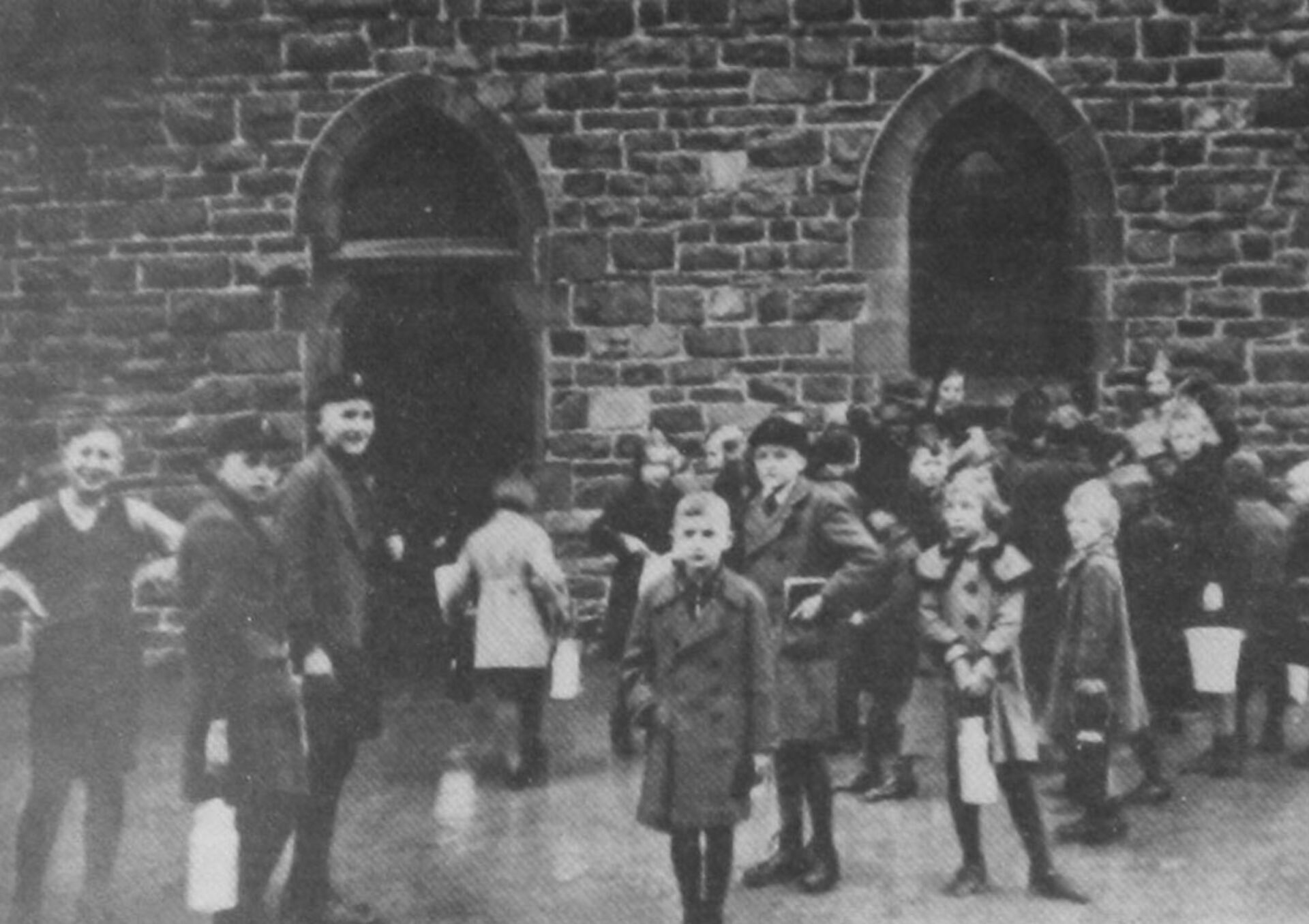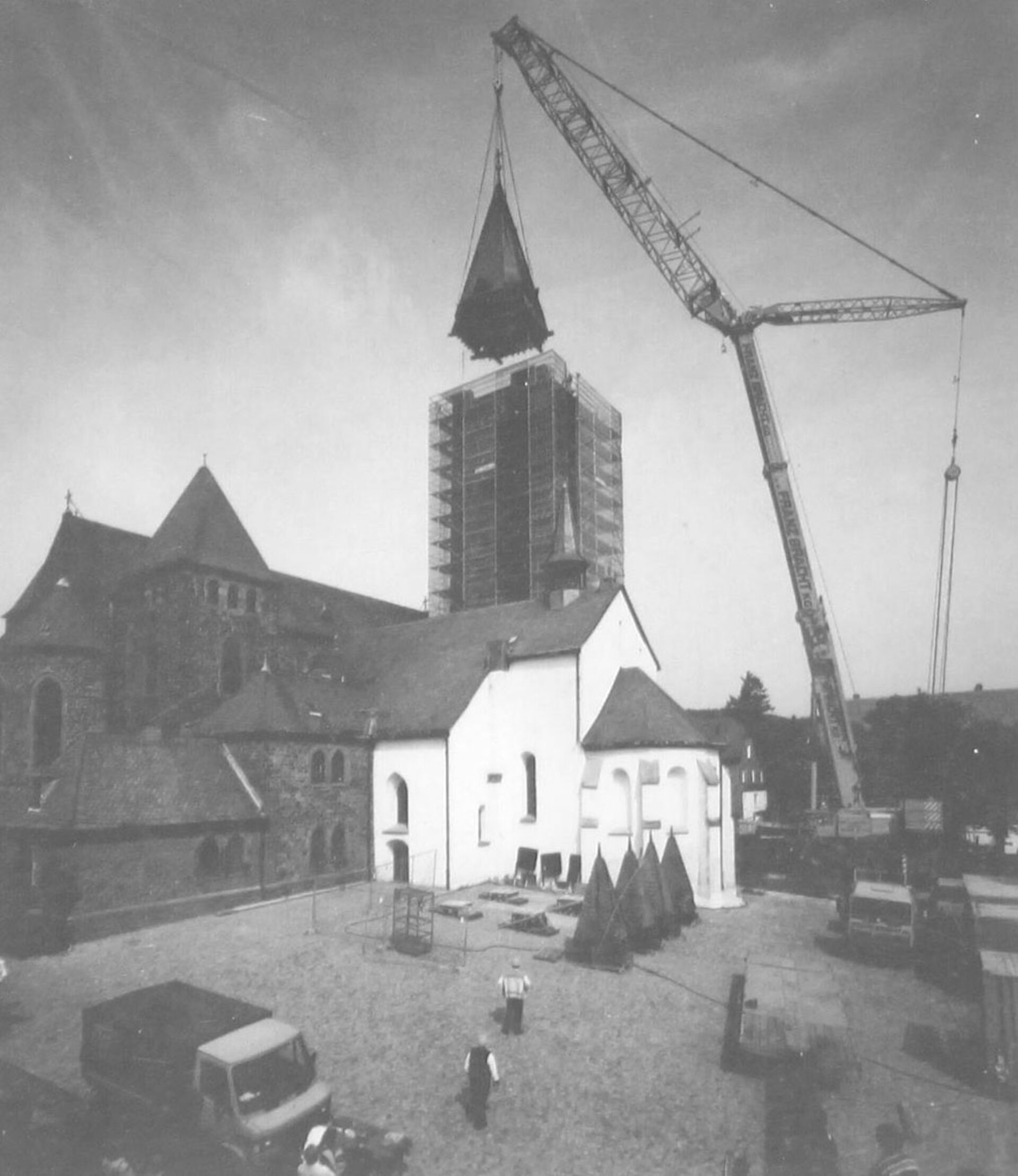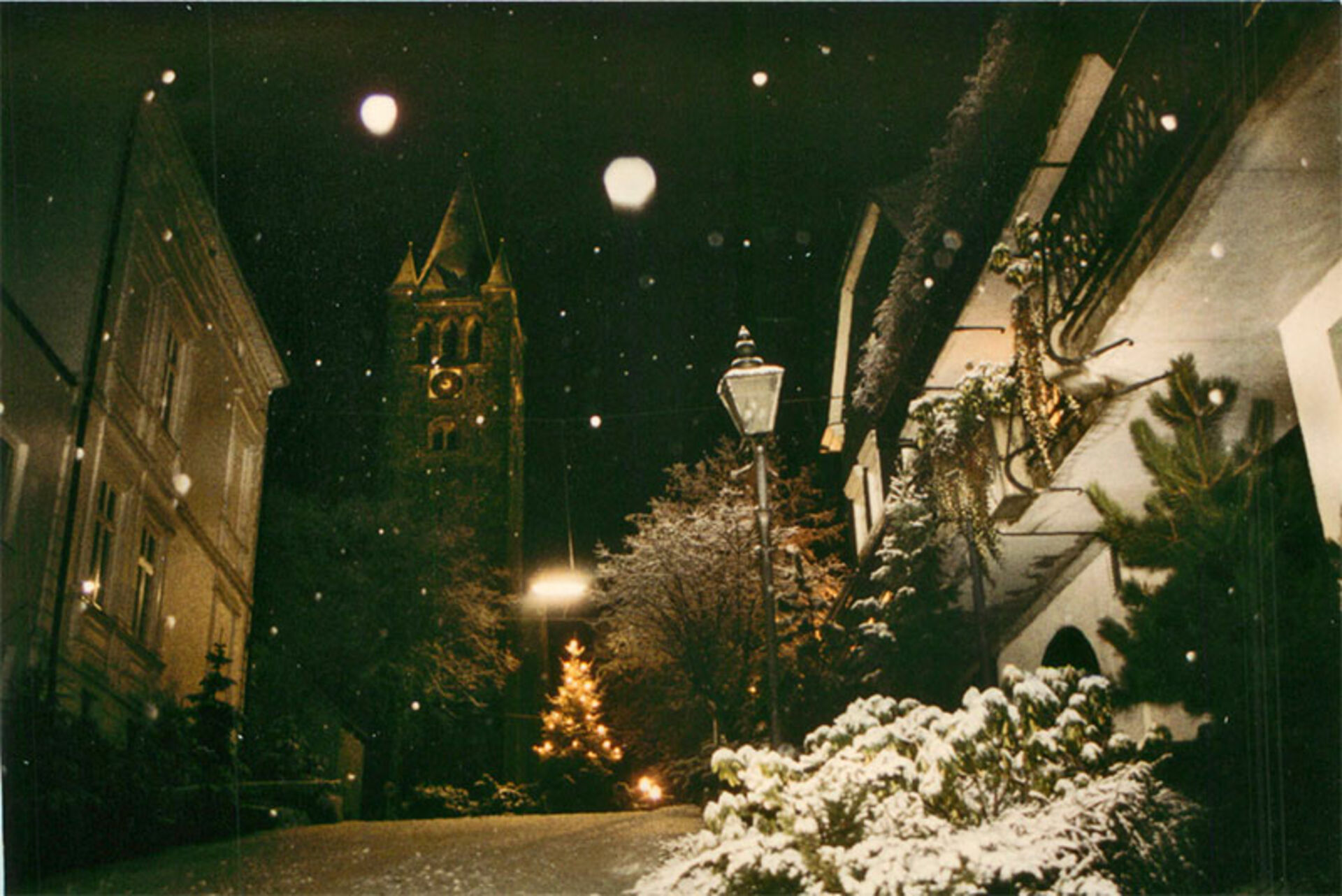Church
artfully extended and landmark of the city
Information point:
- Church square and Catholic parish church St. Alexander
Romanesque church from 1250 and church extension in 1905
Shortly after the town was founded, a small Romanesque hall church was built around 1250; it was first mentioned in a document in 1261. The history of the parish is closely linked to the monastery Grafschaft which for almost 600 years sent monks for pastoral care to Schmallenberg for almost 600 years.
The church survived the town fire of 1822, but towards the end of the 19th century it was no longer big enough for the growing congregation. As a result, it was extended in 1905: the old church was preserved and integrated into the newly built church in neo-Romanesque style due to its art-historically significant pillars and vaulted structure - two bays and the apse date back to the 13th century. The architect and later master builder of Aachen Cathedral, Prof. Buchkremer, was responsible for the conversion and new construction. The choir of the old, east-facing church was incorporated into the south-facing new church building as a side aisle. The components of the old church were plastered white on the outside and thus stand out from the new building. The Nazarene-style altar dedicated to the town's patron saint, St. Valentine, is remarkable. On the left-hand side of the old church is the late Gothic sacrament house, which was built before 1500.
The old church tower, which dated back to the mid-13th century, was demolished during the renovation and a new, mighty tower was built outside the church in the north-east of the church complex. Together with the parish church St. Alexander, it forms a striking counterpoint to the elongated structure of the town complex. The extension was completed in 1906 and was unanimously praised by the residents. According to the press at the time, the tower of St Alexander's dominates the overall structure of the church and is the "landmark of our town, an architectural masterpiece" that "catches the rhythm of the mountains". It "takes on a role that shapes the town and the landscape".
Religion and faith in everyday life
Until the 1950s, the consecration of water took place in the church square on Holy Saturday. Large zinc tubs and wooden vats containing the consecrated water were placed on the square: Milk cans, buckets, jugs and bottles were used to scoop the water out of the containers and take it home, usually by children and often in large crowds. So much water was collected that it lasted the whole year: At Easter, the house was blessed with it and the cattle were given some water in the trough. Consumption was enormous, as it was also spread on the fields and farmland.
Church processes were also firmly integrated into everyday life until well into the second half of the 20th century.
The church tower problem
The new church tower erected in 1906 was built from Winkhauser Grauwacke (gray sandstone), the outer shells were built with stones suitable for hammering, while leftover pieces, uneven stones, slate and bricks were used on the inside. The gaps were filled with rubble and small stones. The mortar used was slag sand, a cheap waste product from the ironworks in the Siegerland region, which had similar properties to cement. Soon after the church tower was completed, moisture problems arose. It was extensively renovated in 1958, but the basic problem could not be solved. In the 1980s, the question of how to make the tower watertight became increasingly urgent. Should it be plastered or conserved, demolished and rebuilt?
The church tower was finally demolished in 1996. The plan was to rebuild it according to Buchkremer's original plan, but with better building materials and modern construction technology. In the planning phase after the demolition, cost and material issues came to the fore. The design was also increasingly the subject of controversy among the population and a veritable dispute broke out over the financing and the type of redesign of the church tower. One side was in favor of an original reconstruction, the other for a modern version. In the end, a compromise was reached: between 2001 and 2004, a simple concrete tower was erected, encased in stone cladding - thus combining stability with a reconstruction that was almost true to the original. The entire church was completely renovated in 2013/14. Visitors enter the interior of the tower through a door in the north wall of the old church and a connecting corridor. Today it contains a meditation room and is open up to the ceiling inside: "The height unlocks the sky", according to the text in the church guide.


